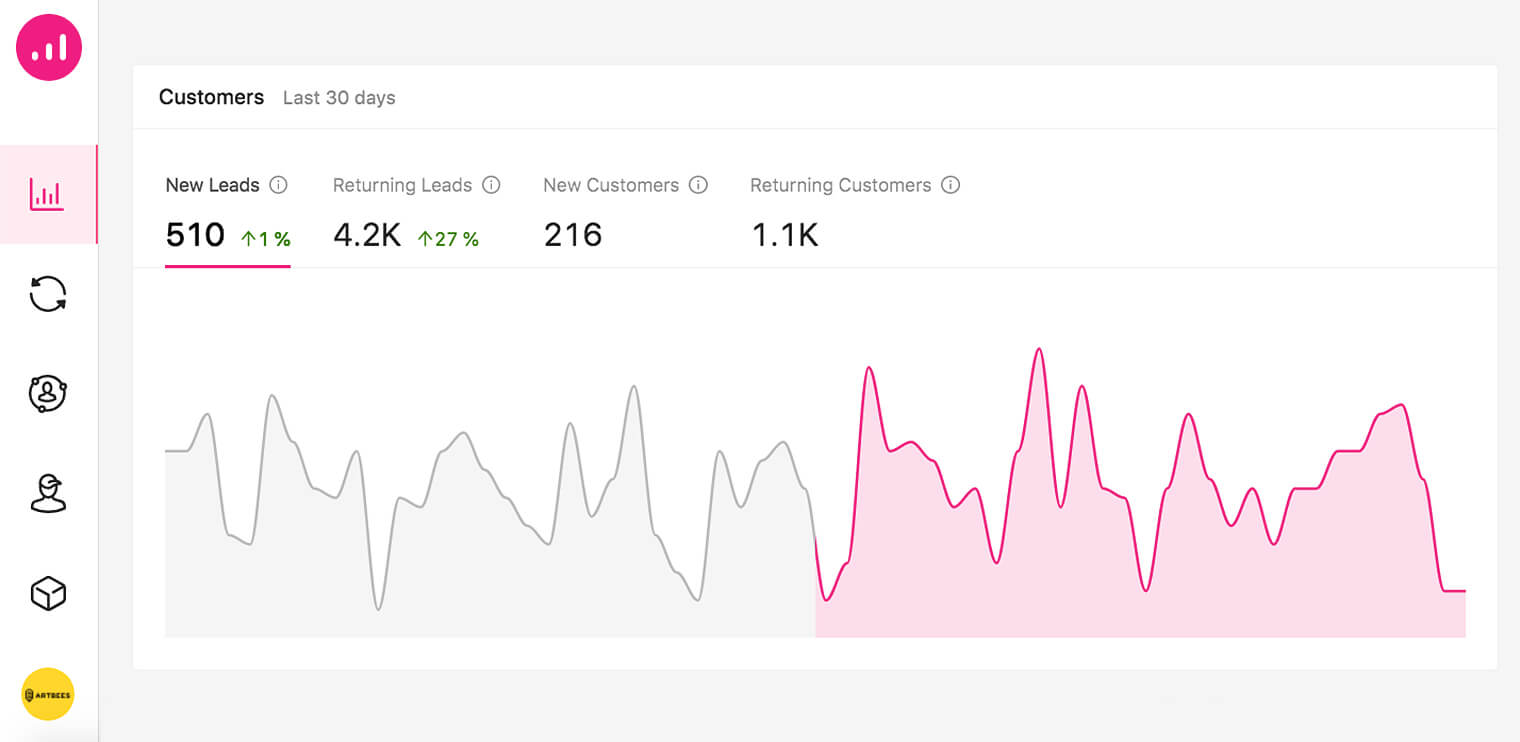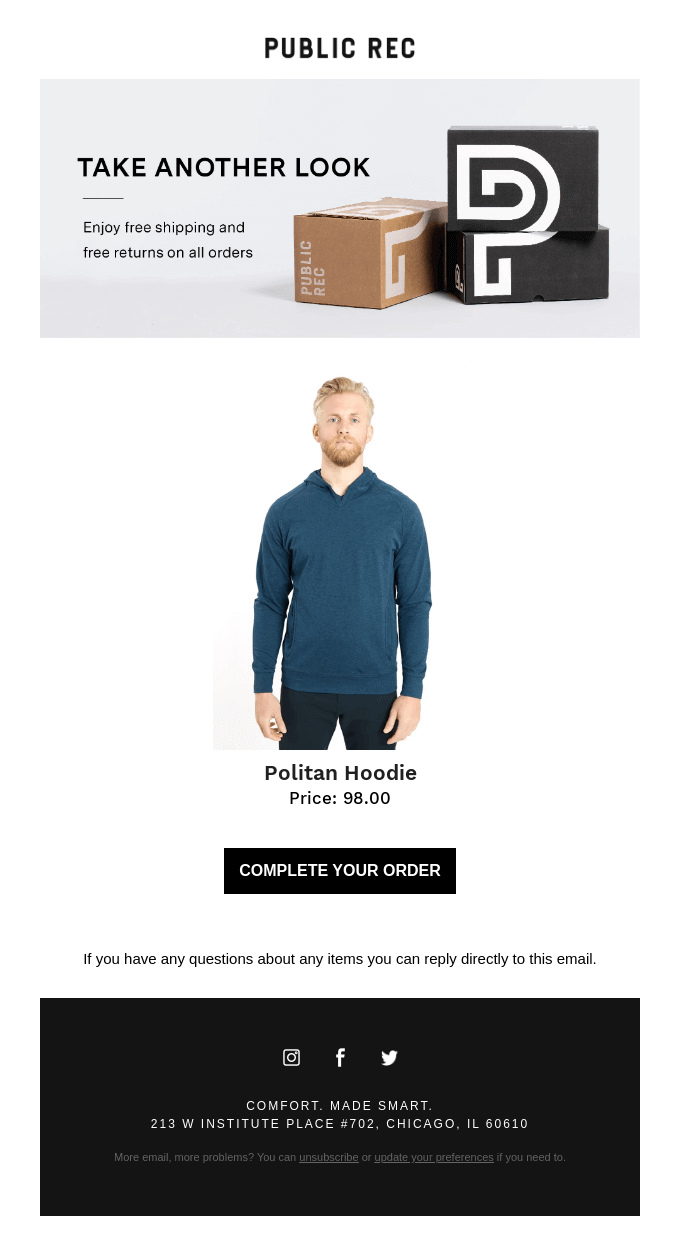
13 essential marketing automation KPIs smart marketers monitor
Marketing automation is becoming more and more popular. In recent years many companies, regardless of size, industry, or business goals, have begun automating their marketing activities or using marketing automation solutions as part of their marketing strategy. Emailmonday conducted research about marketing automation usage and discovered that 51% of the companies are currently using marketing automation, while 58% of the B2B companies plan to use the technology. And there are good reasons behind this popularity! A proper marketing automation in place automates repetitive tasks and takes care of tedious legwork so marketers can focus on more important stuff.
While marketing automation streamlines creating and managing marketing campaigns and provides invaluable data about your audience and general marketing efforts, all this might go to waste if you don’t have a solid plan to measure and analyze your campaign results. After all, how else can you figure out what works and what does not in your marketing automation, how efficient your campaigns are and if your company budget is invested in the right marketing strategies? That’s where marketing automation KPIs come into play! KPIs are essential data that measure your campaigns’ effectiveness and efficiency and demonstrate whether they’re taking you closer to your business goals or not.
In this article, we’ve listed some of the most essential marketing automation KPIs you should be tracking to ensure the success of your campaigns and boost your overall company growth.
- What are KPIs?
- How to choose the right KPIs to track
- Types of performance indicators
- Wrap up
What are KPIs?
Before we dive in, let’s first clearly define what KPIs are. A KPI, short for Key Performance Indicator, is a quantifiable marketing metric that measures your performance in a specific area, from reach and engagement to employee performance and sales. And marketing automation KPIs are those metrics that relate to the performance of your marketing campaigns.
Tracking the right KPI helps you learn what part of your marketing strategy played a major role in your campaign’s success, understand which channels are the least profitable so that you can focus your investments on the profitable ones for the future.
How to choose the right KPIs to track
There are many marketing KPIs out there that you can track to improve your marketing strategy, but not all of them are helpful. Plus, measuring all of those KPIs wastes your valuable time! Also, there is no fixed standard toward choosing the right KPI to track. You might figure out a combination of useful KPIs that will help you succeed, but that doesn’t mean that list will work as well for another company.
KPIs, as their name suggests, measure your key indicators. In order to find the most essential marketing automation KPIs to track, you must take a look at your business goals and filter out the irrelevant metrics that do not align with your goals. That being said, in order to choose the right KPIs for your business, you need to align KPIs with SMART goals. Let’s see what SMART goals are and how they help you achieve the right KPIs to track.
SMART stands for Specific, Measurable, Achievable, Relevant and Timely. Let’s go into more detail for each of these:
Specific: You must set specific goals that accurately define the path you need to take to achieve your company’s ultimate goal. Instead of setting general and vague goals like “sell more”, go for a more specific goal such as “double website traffic by the end of quarter”. Having specific goals helps you set and measure the right KPIs.
Measurable: The goals you set should be trackable and measurable using the right KPI. How will you know you have achieved a specific goal if you can’t evaluate performance or measure progress for your campaigns?
Achievable: Set realistic goals that you truly believe your team can achieve in the scheduled period of time. Nothing is more motivating for an employee than an ambitious goal, but there is a fine line between ambitious and unrealistic goals, and the second sort can drastically discourage employees, as it means putting effort and enthusiasm into a project only to receive disappointing results.
Relevant: Your marketing strategy can be modified from time to time. What you should do is keep both big and smaller goals in line with and relevant to the ultimate company objective and opt out those that aren’t related to the strategy you choose to prioritize. Let’s say you’re planning to create hype around a newly launched product. You should probably track the click rates of the email announcing the new product.
Timely: When setting your goals, keep in mind that attaching a deadline to your goals and creating a sense of priority to deliver results in a specific time frame will help you take wiser and better steps toward achieving the end goal.
Once you set your SMART goals, you’ll know what KPIs will take you down the right path to attaining a certain goal.
Types of performance indicators
Now that you know how to find the best KPIs to track, it’s time to read about different types of metrics that essentially cover your marketing activities. To make it more organized and understandable, we’ve categorized them into 4 types that you should use to track the effectiveness of your marketing campaigns. Here they are:
Activity metrics
When measuring the success of your marketing activities, you should first check whether your team is actually using the automation tool in the right way, and ensure that your activities generate enough data that can be used to measure the whole process at the end. The metrics you should be looking at at this initial stage are called “activity metrics”. Here are 2 of the most important ones to track:
Number of emails sent
This is the simplest metric you should be looking at to understand if your team is actually using the automation software you have invested in or if there is any barrier that keeps them from doing so.
Setup of quality behavioral triggers
Sending emails actively is the first important step but it’s not enough. You must set up behavioral triggers to target the right audience and send your email campaigns to a specific customer segment based on their behavior and activity on your website.
Above is an example of a cart abandonment email that is triggered by a customer leaving a product in their shopping cart without completing the purchase. Once you set these kinds of behavioral triggers, you’ll have customer segments that you can send personalized and targeted emails to.
Creating personalized email campaigns based on user behavior (and thus using automated customer segmentation to send targeted emails through your automation software) will guarantee you’re in full control of both quality and quantity (the first metric mentioned above) of the emails your team sends and that you can move on to track the next metrics.
Engagement metrics
Now that you know your email campaigns are properly in place and your team is actively using the marketing automation tool, it’s time to determine how your customers feel about your campaigns and how engaged they are with your automation. The metrics that will help you understand if your automation activities are engaging enough are called “engagement” or “response metrics”. Here are some of the most important engagement metrics that you need to be looking at:
Site traffic
If you frequently automate your marketing activities and have a consistent email campaign in place, you should see an increase in your website traffic. If you don’t, this means there is a problem somewhere that needs to be fixed. Tracking your website traffic in different timeframes helps you improve your campaigns for more conversions.
Website traffic might sound a bit generic and even unmeasurable. This term actually contains many different metrics, each contributing to an aspect of your website engagement:
- Sessions: the sum of page visits in a specific period of time
- Users
- Pageviews
- Bounce rate
- Referral source
- UTMs
If you are using Growmatik marketing automation and personalization tool, you’ll have access to an advanced built-in analytics dashboard that allows you to track your website engagement statistics along with many other KPIs that we’ll talk about later in this post. Just click on Analytics from the left sidebar of the Growmatik dashboard and get a full report on how your audience is engaging with your website while comparing rise and decline in different timeframes, all via a visual and easy to understand chart that will give you a better perspective of your most valuable metrics.

Open and click-through rate
These metrics show what percentage of your audience have opened your emails or clicked on the links or buttons in your emails. Measuring these metrics will help you understand if your audience finds your content engaging enough and relevant to their desires. Experiencing low open and/or click rates can be a good indicator that your emails need AB testing and optimization for any factor from copy to subject line and the quality of CTA buttons. We have previously gathered some useful tips on how you can create and send engaging emails for maximum conversions.
In Growmatik, when you create and send an automation rule for your email campaign you’ll get advanced performance reports including total emails sent, click rate, open rate and more inclusive and exclusive data for every single email.

Unsubscribers
Like open and click rate KPIs, this metric lets you track how interested your email recipients are in your message. If the unsubscribers number exceeds 1% of your list, then you most definitely need to revise your customer segmentation practices.
Just like the above metric, you can have access to the number of email unsubscribers from the detailed report of every automation rule.
Conversion rate
The number of visitors who have completed a goal you have defined on your website, such as signing up for the newsletter, downloading an app, watching a video are considered converted. Powerful marketing campaigns have the ability to generate more and more conversions: in much simpler words, they turn visitors into leads and leads into customers. By tracking this KPI, you’d make sure you’re aware of the reasons why a valuable lead could’ve converted but decided not to.
In two separate blog posts we have comprehensively explained what conversion rate is and how to perform WooCommerce conversion tracking.
Reconversions
The more conversions your website generates, the better. Reconversion is, as the name implies, when a customer converts on your website again, by purchasing products more than once, for example. As this KPI increases, it brings better quality and well-nurtured leads that already have valuable knowledge about your products or services.
In the Growmatik Analytics dashboard you will find all the information about your new and returning leads and customers.

Bounce rate
Potential customers who click away from your website without performing any action are said to have bounced. A high bounce rate likely indicates that there is something wrong with your page. Links that send visitors to the wrong page, poorly optimized product pages or bad display on mobile devices are all frequent offenders that lead to a poor user experience. Tracking this KPI allows you to find the reasons why people are leaving your site and improve your landing page to get your audience stuck to your content.
In Growmatik, you will find your website bounce rate number in the Site Engagement section of the Analytics dashboard, and your email bounce rate down below the dashboard in the Email Engagement section. In Growmatik, you will find your website bounce rate number in the Site Engagement section of the Analytics dashboard, and your email bounce rate down below the dashboard in the Email Engagement section.

Customer metrics
Undoubtedly, the ultimate goal of every business is to acquire more conversions, aka paying customers. Customer metrics track how successful you are at your marketing automation efforts and whether those efforts are driving sales. Some of the essential customer metrics to track are:
MQLs (Marketing Qualified Leads) and SQLs (Sales Qualified Leads)
Marketing Qualified Leads or MQLs are those of your leads that are very likely to become customers. They have shown an interest in your content in some way,such as e adding a product in their cart. These leads may not be converted yet but they are interested in becoming one soon. If you have a proper lead nurturing strategy in place, this metric will be on the rise.
And Sale Qualified Leads or SQLs are those leads that are more ready to be converted and that your sales team has identified as target customers who would close the funnel. If you see a rise in your SQLs, it means that your marketing automation is working efficiently, and if your MQLs are lowering in number it shows that there might be an alignment issue between the marketing and sales team that keeps MQLs from becoming SQLs.
Customer acquisition cost
Customer acquisition cost or CAC is the amount of money you need to spend to turn a lead into a new customer. It could be the cost of a marketing automation tool, advertising budget and so on. Let’s say you have a $1000 budget in place for your marketing activities, if you get 10 new customers during the campaign then your CAC is $100.
By tracking this metric you’ll understand which of your campaigns brings in more customers with the lowest budget. Using an all-in-one marketing automation tool like Growmatik will help you lower your costs by saving you from spending money on multiple tools for each part of your marketing campaigns.
Customer lifetime value
Customer lifetime value or LTV is the amount of revenue a customer generates during their lifetime with your brand and how likely they are to spend throughout this period of time. This metric can be calculated through this formula:
Average purchase value x purchase frequency rate x average customer lifespan
Measuring LTV will help you understand how much you need to spend to get a new customer so you can budget customer acquisition more efficiently in your future campaigns.
Value metrics
Measuring value metrics will help you understand how much value you’re getting from your marketing automations and if your automation activities positively and consistently impact the profit you make.
Return on investment (ROI)
ROI tells you how much revenue the campaigns generate when compared to how much you spent. It is actually a function of two previous KPIs above, so you can calculate it by subtracting the customer acquisition from the total campaign revenue. This KPI gives you control over your profit and allows you to budget more efficiently for future campaigns.
Revenue generated
Unlike ROI, this metric doesn’t give you a ratio comparing two KPIs, but instead shows how much revenue is generated from your automated actions. It’s actually the most essential KPI to understand if your marketing automation is performing successfully.
Wrap up
Measuring performance is an essential part of any marketing strategy. With the right and actionable marketing automation KPIs, identifying your campaigns’ weak points and optimizing them for better becomes much easier and the effectiveness and success of your marketing automation implementation is guaranteed.



